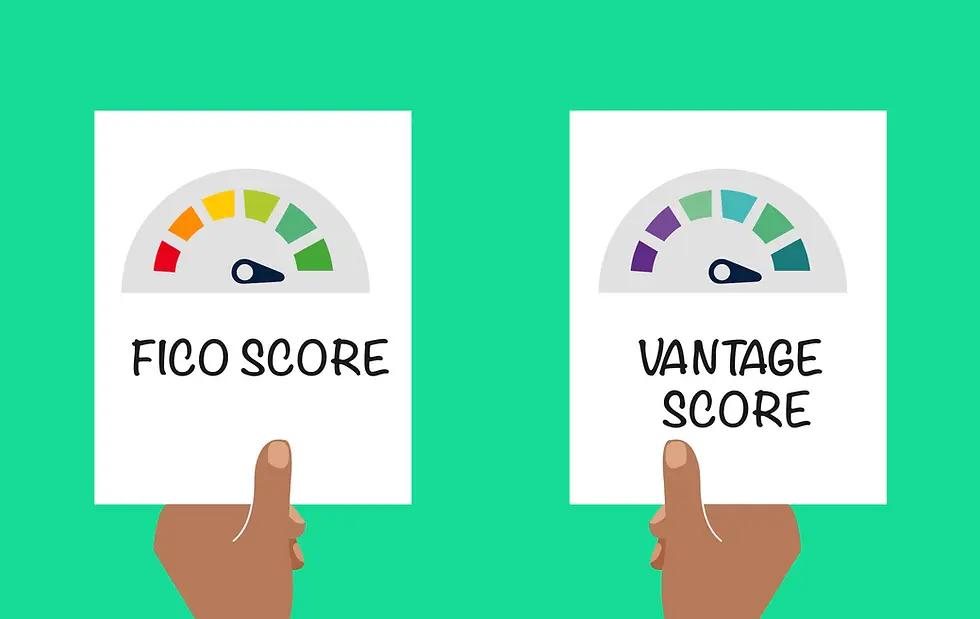The Difference Between FICO® and VantageScore® Explained
- Guard My Credit

- Sep 9
- 2 min read
Your credit score can shape everything from getting approved for a loan to the interest rate you pay. Two of the most common scoring models are FICO® and VantageScore®. Both use a 300–850 range, but they’re not identical. Here’s what you need to know.

1. Where They Come From
FICO®: Developed by Fair Isaac Corporation and has been the industry standard since the 1990s.
VantageScore®: Created in 2006 by the three credit bureaus (Equifax, Experian, and TransUnion) to bring consistency across reports.
2. How They Handle Credit History
FICO® usually requires at least six months of credit history and one account reporting to generate a score.
VantageScore® can produce a score with as little as one account and one month of history, making it more accessible for people new to credit.
3. Differences in Scoring Factors
Both models look at payment history, utilization, account mix, and inquiries, but they weigh them differently:
FICO® puts heavy emphasis on payment history and penalizes late payments more.
VantageScore® is more flexible. For example, recent versions treat medical collections less harshly and may ignore paid collections altogether.
VantageScore also uses “trended data,” meaning it looks at patterns over time instead of just a single snapshot.
4. Why Scores Can Differ
It’s common to see your VantageScore a little higher than your FICO®. In some cases, the gap can be 10–50 points. That’s not an error—it’s just the way each model interprets your credit file.
5. Which One Matters More?
FICO® is still the go-to for most lenders, especially for mortgages, auto loans, and credit cards.
VantageScore® is widely offered for free on apps and websites, making it useful for tracking your progress and spotting changes early.
Final Thoughts
Both FICO® and VantageScore® give a picture of your credit health, but they aren’t identical. FICO® dominates lending decisions today, while VantageScore® is becoming more common and is more inclusive for people with limited credit history.
If you want the full picture, keep an eye on both. And if you need help disputing errors or improving your score, Guard My Credit is here to guide you every step of the way.




Comments